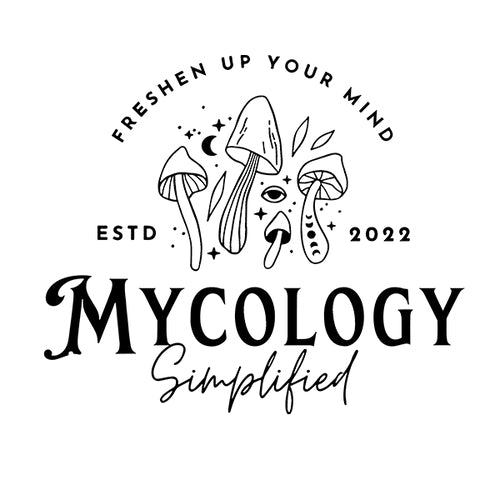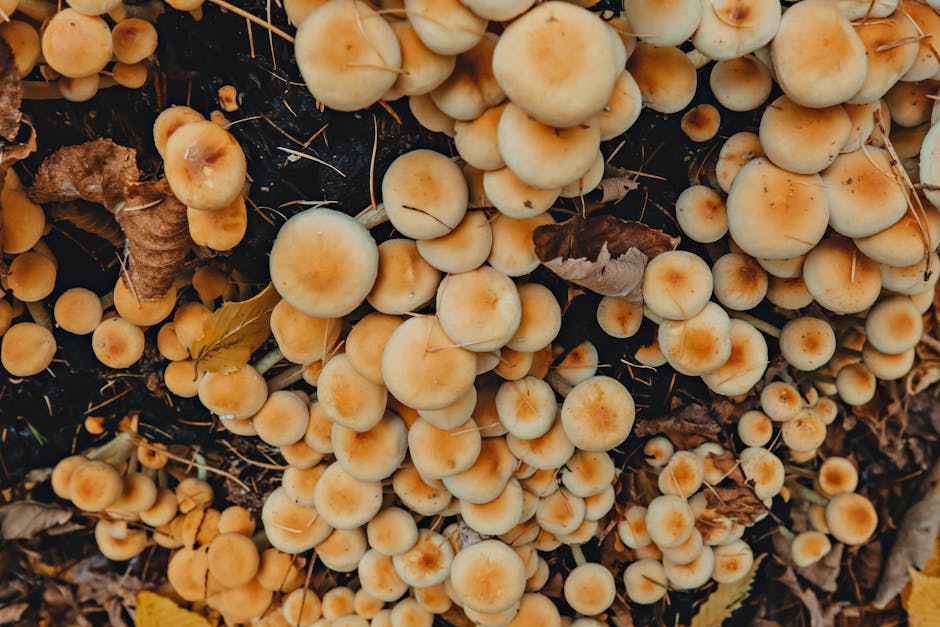
Agar Basics: Mycelium Transfers, Starting spores, Cleaning contamination, selecting the best sectors, and more
Compartir
Introduction to Agar and its Importance in Mycology
Agar is like the bread and butter of the mycology world. It’s not just a jello-like substance; it’s a key player in growing and studying fungi. Think of agar as a magic canvas where the hidden wonders of fungal life unfold. Without agar, mycologists would be like painters without a canvas, struggling to get a clear picture of their subjects. Agar allows scientists and hobbyists to isolate and nurture different fungi species, making it easier to study their characteristics, identify them, and even create new strains. Whether you’re aiming to start your spore cultures, transfer mycelium, or just geek out on fungi, agar is your starting line. It gives a clean, controlled environment where fungi can show their true colors, minus the contamination that often comes when trying to grow them in less sterile conditions. Understanding agar’s role is step one in your mycology adventure. It’s a game-changer in the world of fungi, offering a window into the complex and often mysterious behaviors of these incredible organisms.
Step-by-Step: Preparing Your Agar Plates
First, you’ll need agar powder and petri dishes. You can find these online or at a science supply store. Mix the agar powder with distilled water following the instructions on the package—usually, it’s something like mixing 20 grams of agar with 500 mL of water. Next, you need to sterilize the mixture. Pour the agar mix into a pressure cooker or a pot if you don’t have one. If using a pressure cooker, process at 15 PSI for 15 minutes. For a regular pot, bring it to a gentle boil and keep it there for about an hour, watching closely to make sure it doesn’t boil over.
After sterilization, let the mixture cool down but not solidify—around 45 to 50 degrees Celsius is perfect. Now, carefully pour the slightly cooled agar into the petri dishes. Fill them up to halfway or a bit less to avoid spills. Be quick but careful to prevent contamination. Next, let the agar solidify at room temperature. This might take a few hours. Make sure the surfaces are steady and undisturbed.
Once solid, you can store the plates in a refrigerator if you’re not using them immediately. Keep them upside down to avoid condensation on the surface of the agar. Remember, sterility is crucial in every step. Always work in a clean area, use gloves, and consider wearing a mask to avoid introducing contaminants. Now, your agar plates are ready for mycelium transfers or starting spores.

Initiating Mycelium Growth: Spore Syringe to Agar
To kick things off with mycelium growth from a spore syringe to agar, it’s simpler than it sounds. Think of agar as a nutrient-packed jelly that gives your fungi a head-start. First, you’ll need a sterile environment. Any contamination, and your project goes south. Start by sterilizing your work area and tools. Next, flame-sterilize the needle of your spore syringe to kill any undesirables. Let it cool, then gently squirt a bit of the spore solution onto the agar surface. It’s like planting seeds in soil, but here, the soil is your agar. Cover it up, and wait. In a few days, you’ll see your mycelium, the root network of your mushrooms, start to spread. Remember, patience is key. This is your first step into a larger world of growing and experimenting with fungi. Keep everything clean, and you’re golden.
Techniques for Transferring Mycelium to New Agar Plates
When transferring mycelium to new agar plates, the aim is to get your fungi to grow strong and healthy. It’s a key step in mushroom cultivation, especially if you’re looking to get the best yield. First, you’ll need a clean work area to minimize contamination. Work under a laminar flow hood or in a still air box if you can. Here’s how to do it: Use a sterilized tool (like a scalpel or needle) to gently scrape or cut a bit of mycelium from your colonized agar plate. You don’t need a lot, just a tiny piece. Then, transfer this piece to the center of a new agar plate. Be quick but careful to avoid any air-borne contaminants sneaking in. After transferring, seal the plate with parafilm or similar breathable tape to keep out contaminants but allow gas exchange. Label your plate with the date and strain for easy identification. Give it some time, and soon you’ll see growth radiating from the transfer spot. Remember, practice makes perfect. The more you do it, the better and faster you’ll get at transferring mycelium without introducing contaminants.
Identifying and Dealing with Contamination
When working with agar in mycology, spotting contamination early is key. Think of contamination as the enemy of your mycelium; it competes for resources and can halt your project in its tracks. Common culprits include mold, bacteria, and yeasts, showing up as unwanted colors and fuzzy textures that aren’t your mycelium. Here’s the deal: cleanliness is your best defense. Work in a clean area, sterilize your tools, and don’t open your cultures more than necessary. If you see contamination, act fast. Sometimes, if it’s caught early, you can transfer healthy mycelium to a new agar plate and leave the bad stuff behind. But be real here, if the contamination has spread far, it’s often best to start over rather than risk it spreading further. Also, always label and date your plates. That way, if something goes wrong, you can track back and find out why. It’s all about learning and improving. Remember, the goal is strong, healthy mycelium. Keep it clean, keep an eye out, and don’t give contamination a chance to ruin your hard work.

Selecting the Best Sectors for Optimal Growth
Selecting the best sectors on agar is a game-changer for mushroom cultivation. Think of agar as your training ground, and picking the right sectors is like choosing the best players for your team. Here’s how you nail it: First, after your mycelium has grown, look for sectors that are healthy and vigorous. You want those with even, white, and rhizome-like growth patterns. Avoid any sectors that show signs of contamination - these are not the players you want. Second, your goal is to find sectors that grow quickly but aren’t too aggressive. It’s like finding the balance between speed and strength. Strong, fast-growing sectors mean your mycelium is hearty and ready for the next step, whether that’s grain, straw, or wood. Lastly, remember, this process is all about observing and making sharp decisions. Your mycelium’s performance on the agar is a sneak peek into its future potential. So, by picking the best sectors, you’re setting up for a win in the mushroom cultivation game.
The role of Agar in Cloning Mushroom Cultures
Agar plays a crucial role in mushroom cultivation, especially when cloning mushroom cultures. Think of it as a gelatinous canvas that supports the growth of mushroom cells. This substance, derived from seaweed, offers a sterile environment where mycelium, the network of threads constituting a mushroom, can thrive away from contamination. When you’re cloning mushroom cultures, agar becomes your best ally. You start by taking a small piece of mushroom tissue and transferring it onto the agar. This allows the mycelium to grow independently, creating a pure culture. This method is key for selecting strong, healthy mushroom strains to enhance your cultivation efforts. It’s simple: healthier mycelium leads to a more abundant mushroom harvest. Agar’s role is not just limited to growth; it’s a tool for identifying and removing contamination, ensuring only the best mycelium sectors are selected for further cultivation. By using agar, cultivators can pinpoint the strongest, most resilient cultures, setting the stage for successful mushroom growth.
Advanced Tips: Maximizing Yield and Purity
When it comes to maximizing yield and purity in your mycology projects, it’s all about mastering a few keen tricks. Firstly, keep your work area squeaky clean. Contamination is the enemy, and even a tiny speck of mold can ruin your culture. Make sterilization your best friend. Use a pressure cooker to sterilize your agar and tools before use.
Next, practice makes perfect with mycelium transfers. Sharp, swift movements under sterile conditions prevent unwanted guests. Think of it like being a ninja; quick and precise.
Another game-changer is selecting the right sectors. Not all mycelium grows the same. Some parts are more vigorous and resilient. When you spot these champions, transfer them to new agar plates. It’s like picking the best athletes for your team.
Also, don’t be shy to experiment with different agar recipes. Some fungi prefer more nutrients, others less. It’s like cooking; sometimes a little more sugar or a pinch of salt brings out the flavors.
Finally, keep records. Note what works and what doesn’t. This practice turns your experiments into lessons, saving you time and resources in the long run.
By focusing on these advanced tips, you’re not just growing fungi. You’re cultivating success.
Troubleshooting Common Issues in Agar Work
When working with agar, you’re bound to run into a few snags. But don’t sweat it—that’s all part of the learning curve. Some common issues include contamination, slow mycelium growth, and selecting the best sectors for further cultivation. Here’s the lowdown on handling these problems head-on.
First up, contamination. It’s the bane of every mycologist’s existence. If you spot some funky colors or textures on your agar that don’t look like healthy mycelium, you’ve likely got contamination. The best move? Toss it. Seriously, trying to save contaminated cultures is often more trouble than it’s worth and risks spreading those nasties even further.
Slow mycelium growth can be a head-scratcher. If your cultures are taking their sweet time, consider your environment. Temperatures too cool or too warm can slow things down. Aim for the goldilocks zone, which typically sits between 70-75 degrees Fahrenheit for most species. Also, check your agar recipe. Sometimes, a tweak in nutrients can give your cultures the kickstart they need.
Choosing the best sectors for transfer is where your keen eye comes into play. Look for sectors showing vigorous growth, good rhizome structure, and, most importantly, no signs of contamination. Transferring healthy sectors to fresh agar plates or grain spawn is crucial for successful cultivation.
Remember, agar work is as much an art as it is a science. Patience, practice, and a bit of trial and error will go a long way in troubleshooting the common issues you’ll encounter. Keep at it, and you’ll be a mycology maestro in no time.
Conclusion: The Path to Mastery in Using Agar
Mastering the use of agar in mushroom cultivation is a journey, not a destination. By starting spores, transferring mycelium, fighting off contamination, and choosing the healthiest sectors, you build a solid foundation in the fascinating world of fungi. Remember, every mistake is a learning opportunity. Stick to the basics, be patient, and your skills will naturally improve over time. It’s all about experimentation, observation, and adaptation. Keep pushing your limits, and soon, handling agar will become second nature.

